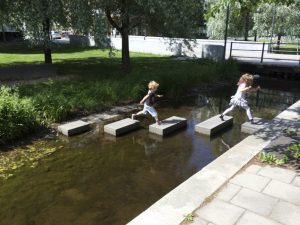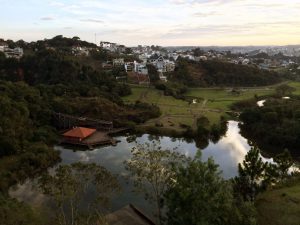City-Making Made Better
By IBI Insights
Date
May 4, 2016Cities are hives abuzz with the activities of billions of people every day. Many of these activities – from movement and work to socializing and leisure – are influenced by the way we build our cities. Yet, whether enjoying a public space or walking and riding the subway to a meeting, most people rarely think about the many independent disciplines that shape and impact their urban experiences. In contrast, the distinct boundaries between fields is one of the key things most city builders, across all professions, face while creating a project. Could the pros learn from the people here? I think so. Cities are a rich tapestry of interweaving activities, forms, functions and people that influence each other. Perhaps it’s time to rethink why city-builders define the boundaries of their respective fields as sharply as a building meeting a sidewalk.
Reflected in the rise of mass production, the 20th century was all about compartmentalization and specialization. For city-building fields, this helped establish deeper understandings of various disciplines, but also entrenched silos between them. The pursuit of specialization also estranged many city building professions and practitioners from the city-dwellers they served, while discouraging the logic of considering various elements of city-building together.

During the 20th Century, city-making disciplines were as segregated and well-defined as this modernist block in Stockholm, Sweden
Focusing exclusively on one discipline is like reading one chapter in a book. You’ll get an idea of what’s going on, but you won’t appreciate the full narrative. Through a greater commitment to interdisciplinary cooperation, city-making disciplines can help create cities and processes that are more open, engaging and responsive to the needs and desires of the people who live and work in them.
Greater integration and interdisciplinary cooperation may sound good in theory, but how could it occur in practice? After all, architecture, engineering and planning, among other city-making fields, are entrenched in their systems, processes and traditions. To bring about the sea change discussed above, a multi-pronged strategy is necessary. I propose three approaches: a shift in city-making education, commitment from one or more influential and innovative firms, and a greater emphasis on discipline-spanning issues.

A playful public space in Stockholm that combines design, landscape architecture and civil engineering
Like the disciplines themselves, a great deal of education in architecture, engineering and planning currently takes place in silos. While the programs could remain separate, why not require all students to take basic courses in two distinct-but-related fields in order to graduate? This would expose them to perspectives that would vary from those in their own programs, enhance understanding of these related fields and perhaps lead to a newfound respect for them. Equally important, young minds are typically more open, which facilitates the introduction of new ways of doing things.
Starting young has its logic, but what happens when these young city makers get to work, back to the status quo? Not if a handful of innovative and influential firms took the lead. Many larger firms already have multiple disciplines under one roof. This value could be harnessed through the cross-fertilization of ideas, similar to MIT’s Media Lab. The result would be new and innovative products and processes – ideally suited for the rapid proliferation of disruptive technology.

Under Jaime Lerner, Curitiba, Brazil created a series of parks that double as flood plains. This approach integrated urban planning, landscape architecture and water management
Finally, when we view a challenge from the traditional viewpoint, we usually find a traditional solution. By changing up the approach, and introducing a silo-spanning perspective, an array of solutions may appear. The re-emergence of health as a city-making issue is one opportunity to adopt this way of looking. Urban health issues have relevance for all city making fields, yet no single field has jurisdiction over them. These issues are also highly tangible, easy for nearly all city dwellers to grasp. Both of these factors encourage interdisciplinary cooperation, and, if consistently applied, such approaches can become self-renewing cycles.
One of the great strengths of cities is their capacity for exponential growth. They are greater than the sum of their parts. So are the skills and ideas of every city making discipline. By encouraging interdisciplinary cooperation among these disciplines, in education, the private sector and practice, we have the opportunity to improve the way we make cities, together with the many people who choose to call them home.







